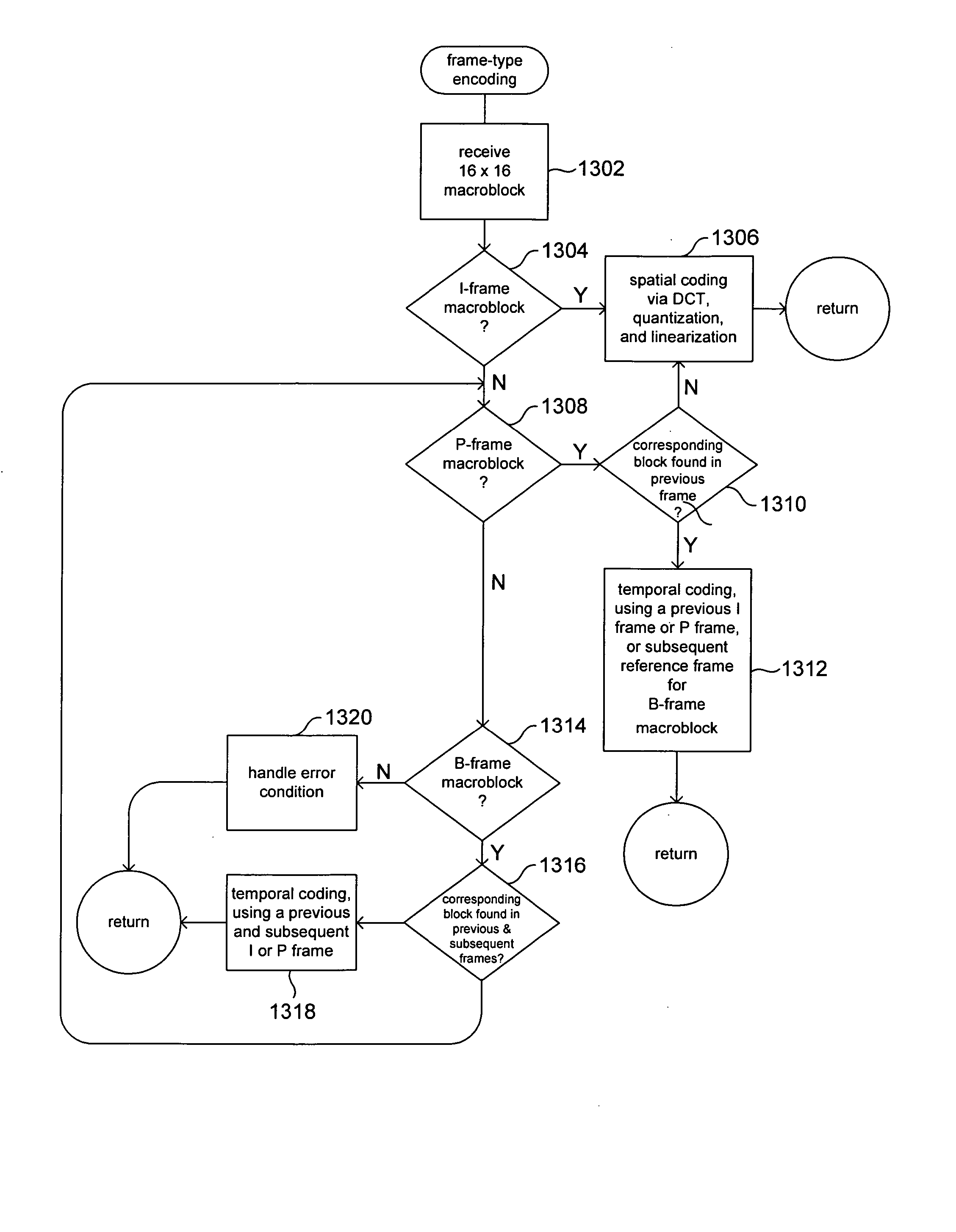Robust and efficient compression/decompression providing for adjustable division of computational complexity between encoding/compression and decoding/decompression
a compression/decompression and computational complexity technology, applied in the field of compression/decompression, can solve the problems of broadcasters, computationally complex and expensive, and computational burden on broadcasters or distributors, and achieve the effect of reducing the computational burden of broadcasters or distributors, and reducing the computational burden of encoding
- Summary
- Abstract
- Description
- Claims
- Application Information
AI Technical Summary
Problems solved by technology
Method used
Image
Examples
examples 3406 and 340
Examples 3406 and 3408 of symbol strings produced by these functions are shown in FIG. 34 for the typical case of k=2. The zeroes of the coset function have also been placed such that they are separated by the same amount. The objective is to derive a coding and decoding scheme where the symbol function can be recovered by soft decoding based on unquantized y, without explicitly transmitting it.
[0101] In particular, the symbol function is applied to each quantized coefficients qt with non-zero base coset function, to yield a k-ary symbol bt. The sequence of symbols {bt} generated from {qt} drives a state-machine with Ns states. For every quantized coefficient qt coded, the current state of the state machine Stε{0, 1, 2, . . . , Ns−1} determines a particular coset function ψSt(k)(qt,Mt) used to obtain the transmitted symbol ct from qt. Each ψSt(k)(qt,Mt) is derived from the base coset function by sign modulation. In other words:
qt=φ(xt,Qt), ct=ψSty(k)(qt,Mt)
bt=ζ(k)(qt,Mt), St+1=η(S...
PUM
 Login to View More
Login to View More Abstract
Description
Claims
Application Information
 Login to View More
Login to View More - R&D
- Intellectual Property
- Life Sciences
- Materials
- Tech Scout
- Unparalleled Data Quality
- Higher Quality Content
- 60% Fewer Hallucinations
Browse by: Latest US Patents, China's latest patents, Technical Efficacy Thesaurus, Application Domain, Technology Topic, Popular Technical Reports.
© 2025 PatSnap. All rights reserved.Legal|Privacy policy|Modern Slavery Act Transparency Statement|Sitemap|About US| Contact US: help@patsnap.com



